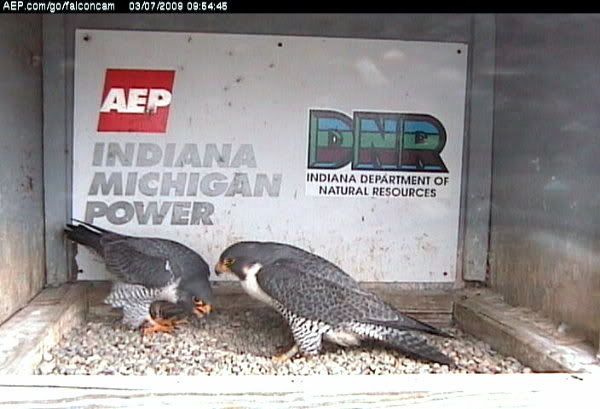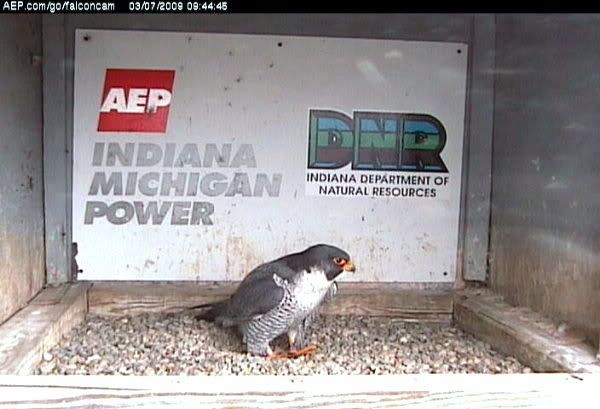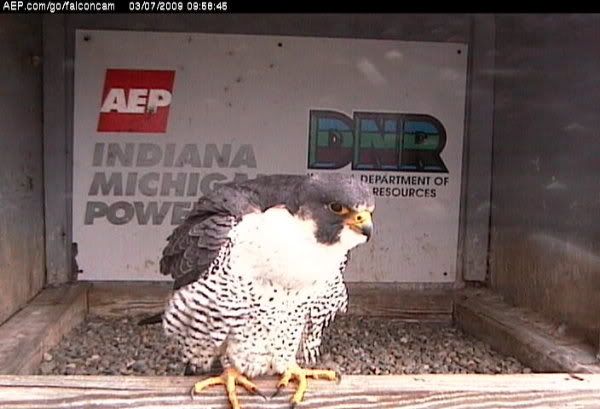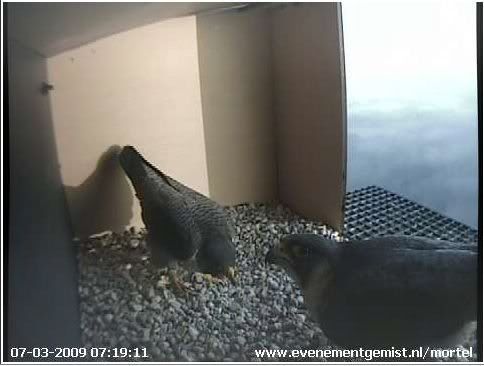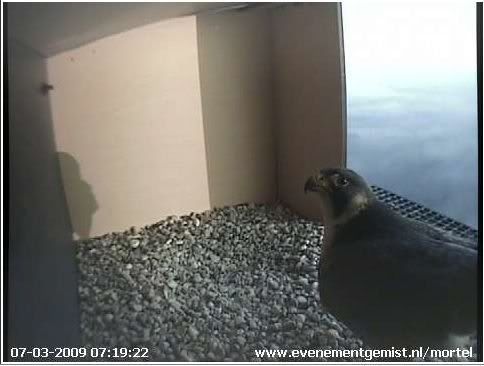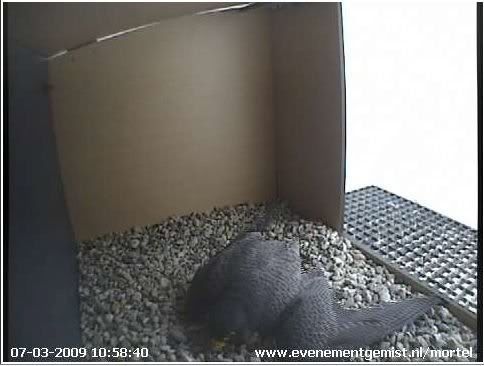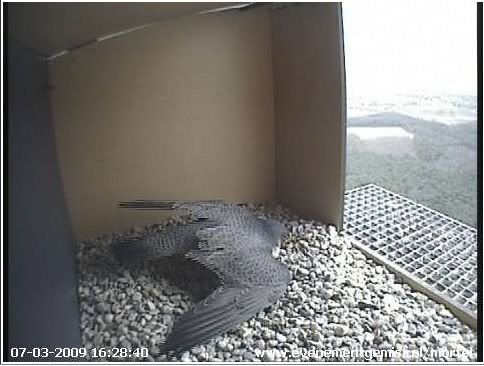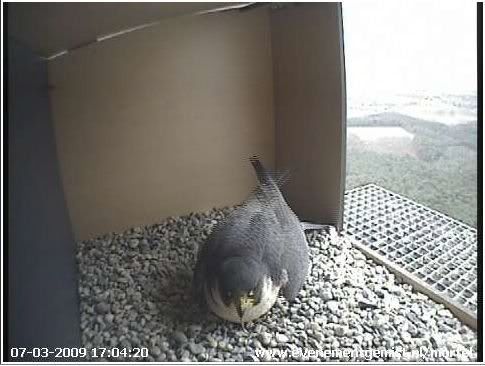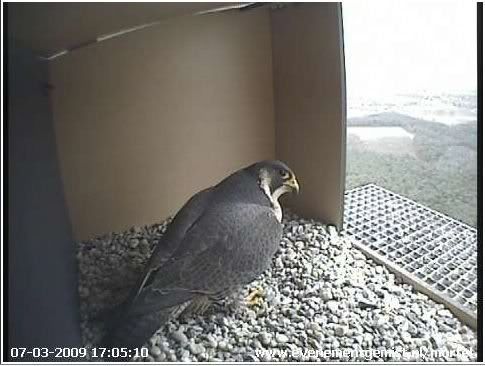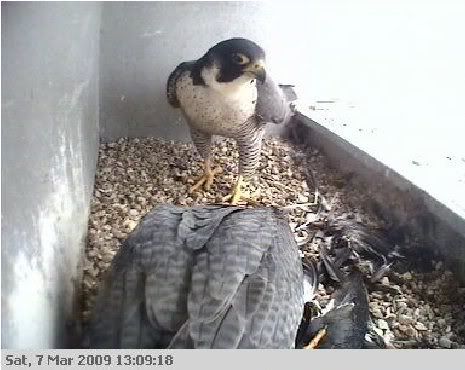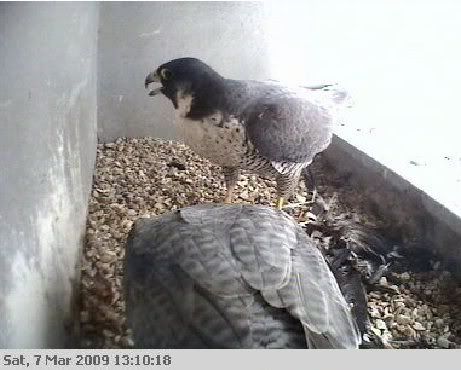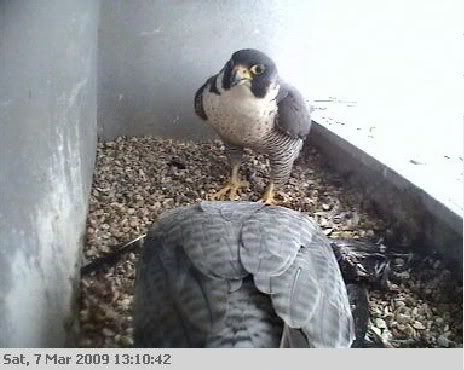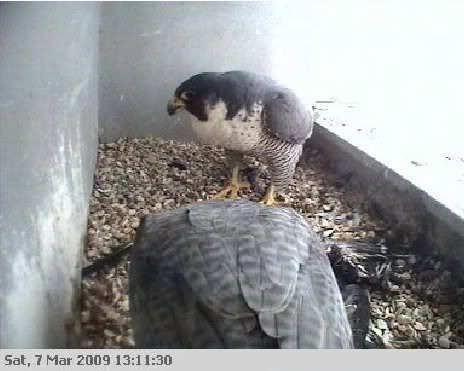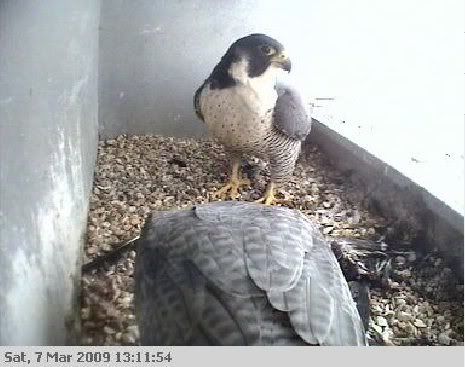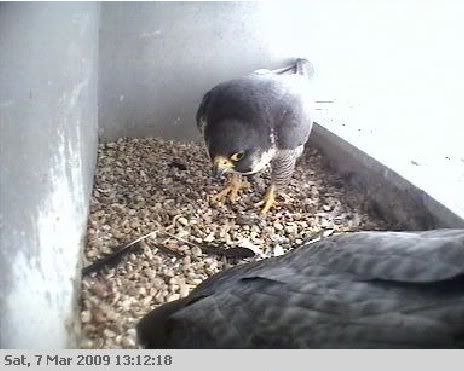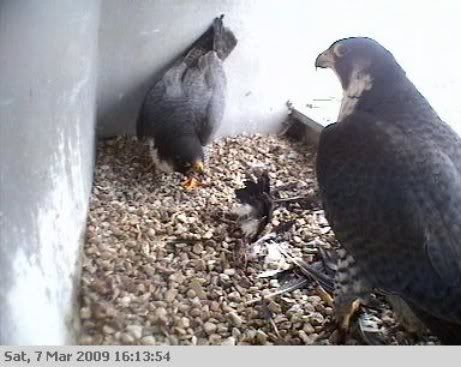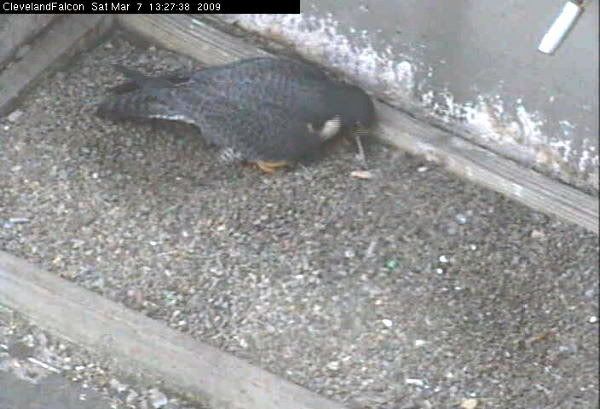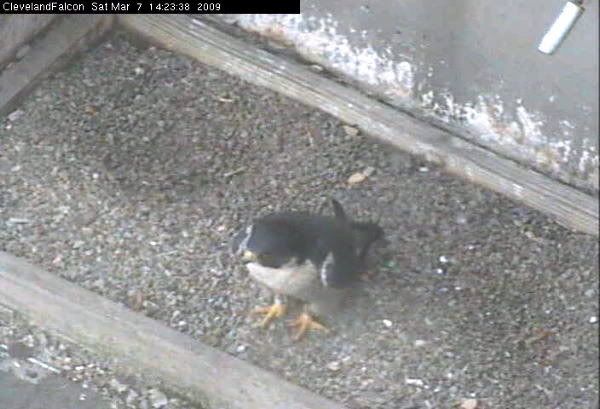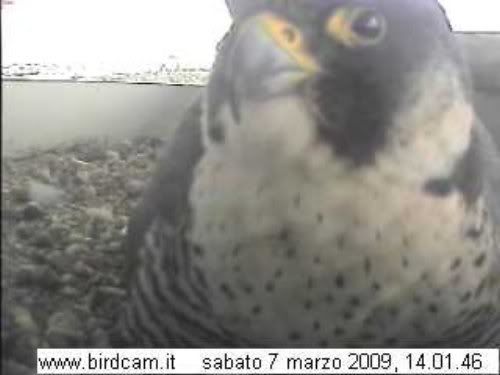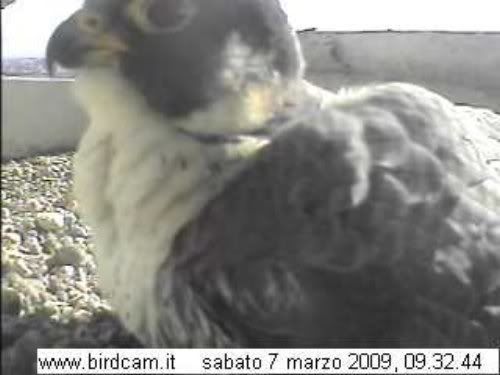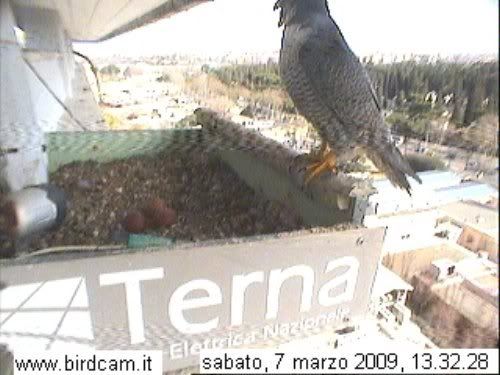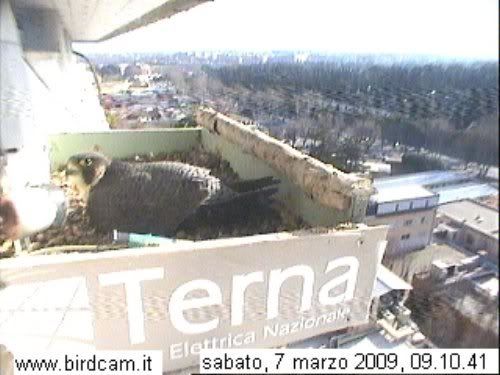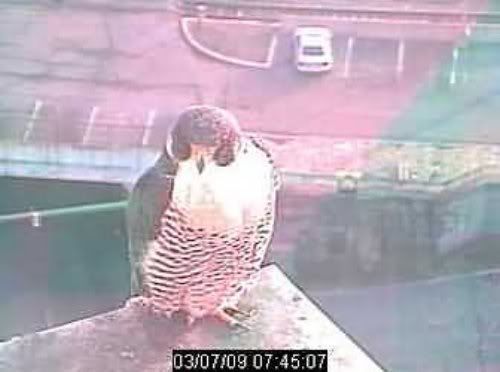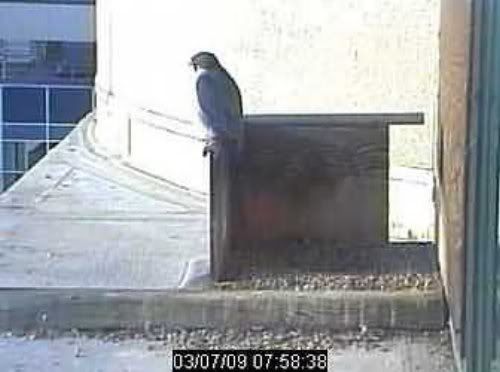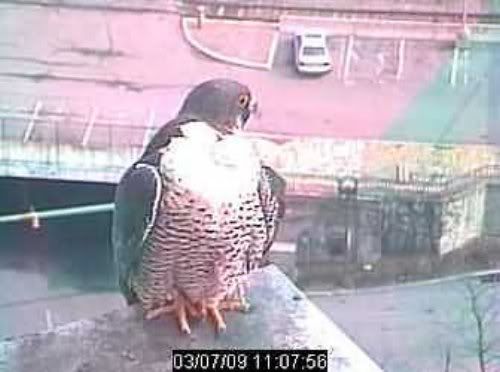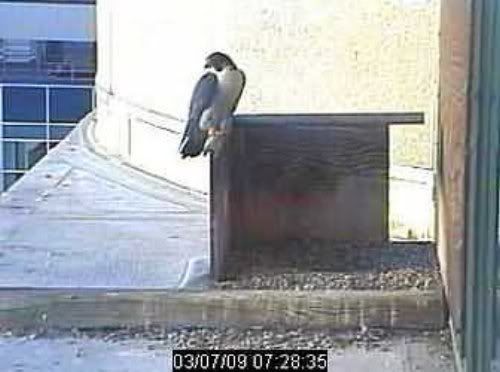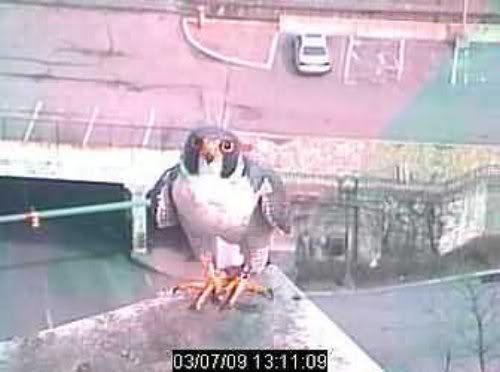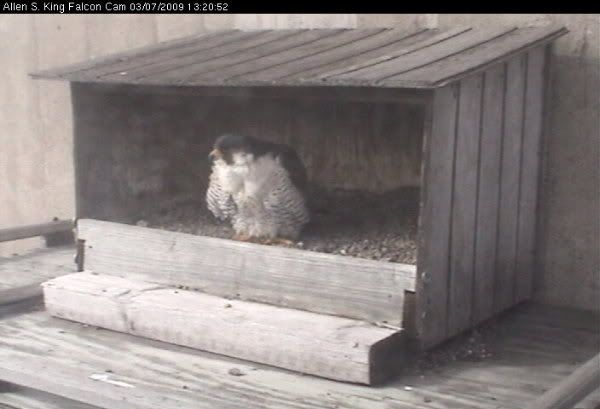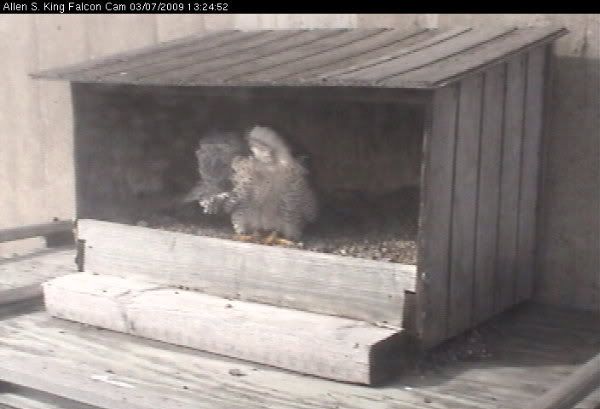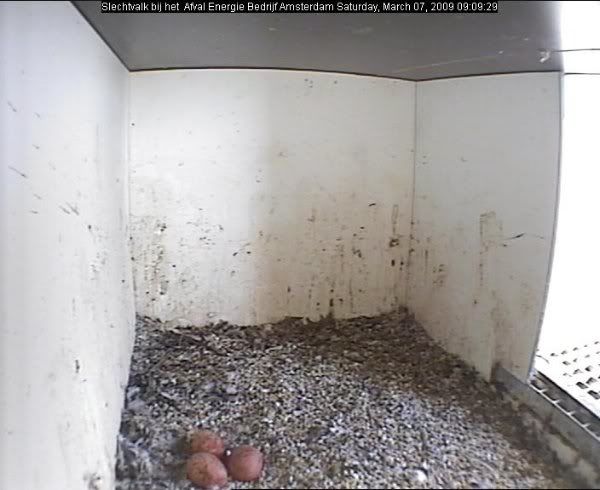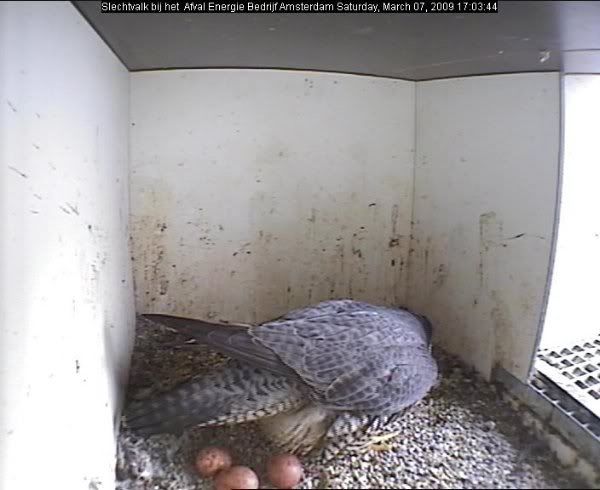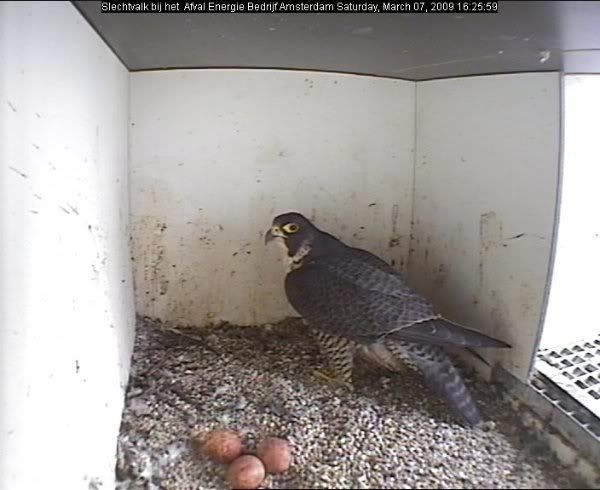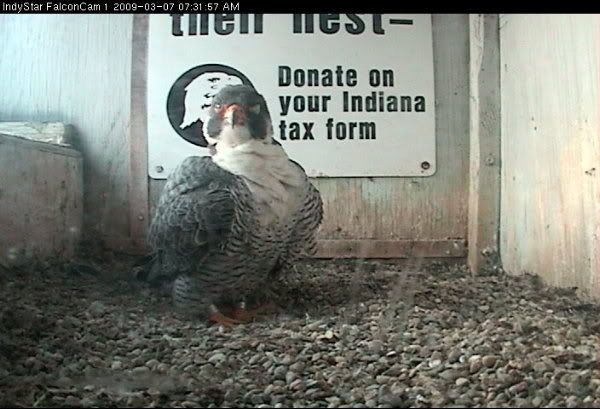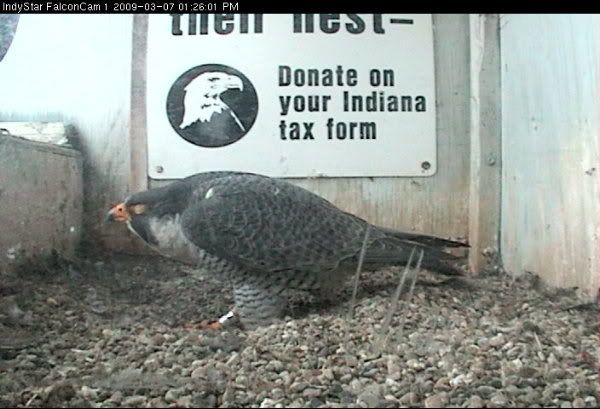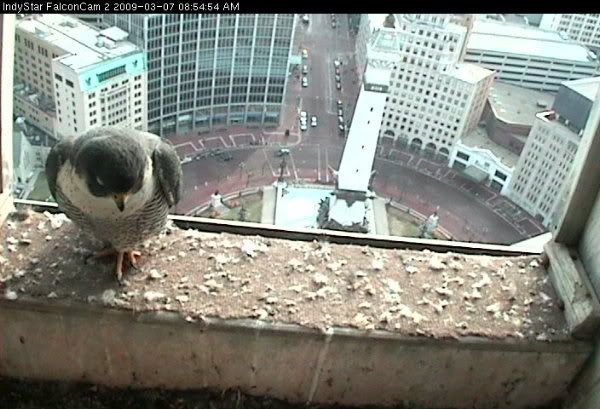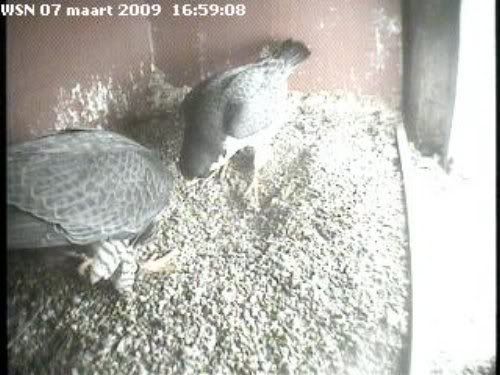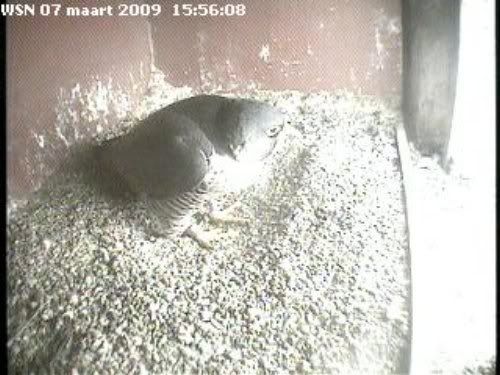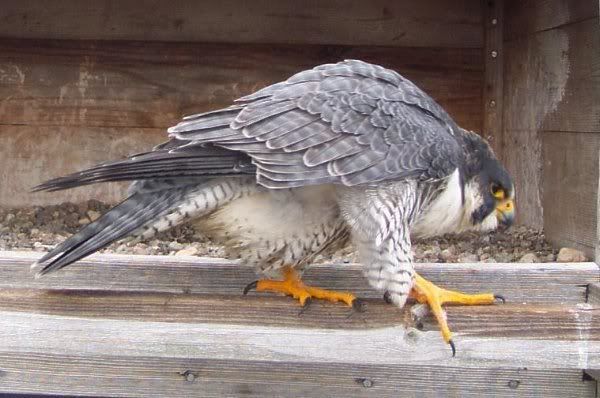
We have had a very cold winter, in America even worse than in Europe. Animal life responds immediately. In order to reproduce, a female has to be in good shape, have lots of energy reserves. When the winter was cold those reserves are gone and have to be built up again.
Prey birds for the peregrine falcon will therefor start laying eggs later than last year. That means that their chicks will fledge later as well.
When the peregrine falcon juvs fledge and have to learn to catch prey, they will need fledging chicks from preybirds.
And so it would be better for the peregrine falcon to start laying eggs completely synchronised with the prey birds.
Instinct is experience from millions of years, listening to the collective consiousness. Animals live by the heartbeat of the Anima Mundi, of Mother Earth. And so does teh peregrine falcon. Her hormones completely rule the ovulation. And that will happen on the very best moment to give the eyases the very best chance to survive.
We only can stand aside in awe and watch................
Egg Production
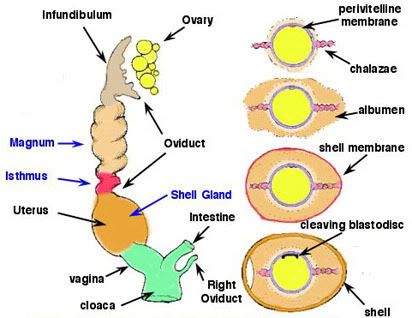
Most birds have only one ovary and one oviduct. In early stages of embryonic development, each female bird has two ovaries; only the left one develops into a functional organ. In some birds, such as peregrine falcons, the right ovary and oviduct usually develop as well. A mature ovary looks like a cluster of grapes. and may contain up to 4,000 small ova which can develop into mature ova.
With fertilization, the ovum or egg becomes a developing embryo
The embryo passes through the oviduct typically takes about 26- 30 hours.
The demand for calcium to make the egg shell is very high, and so the circulating levels of blood calcium in birds are greatly elevated compared to mammals, typically twice as much.

The ovary enlarges greatly during the breeding season. Active ovaries resemble bunches of tiny grapes -- the developing follicles. The oviduct opens medially to it in a funnel-shaped ostium. Ovulation results in the release of an egg from a mature follicle on the surface of the ovary. The egg, with extensive food reserves in the form of concentric layers of yolk, is picked up by the ostium an ciliary currents carry it into the magnum region.
Over about three hours the egg receives a coating of albumen. The egg then passes into the isthmus, where the shell membranes are deposited. This takes about one hour. The egg them moves to the uterus, or shell gland, where the calcareous shell is added and, in some birds, pigment is added in characteristic patterns. This takes about 20-26 hours. The egg then passes into the vagina and cloaca for laying.


